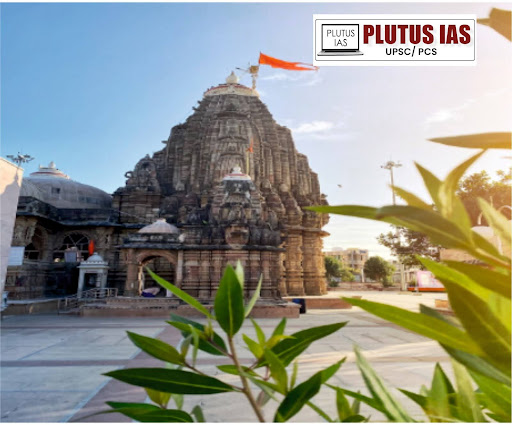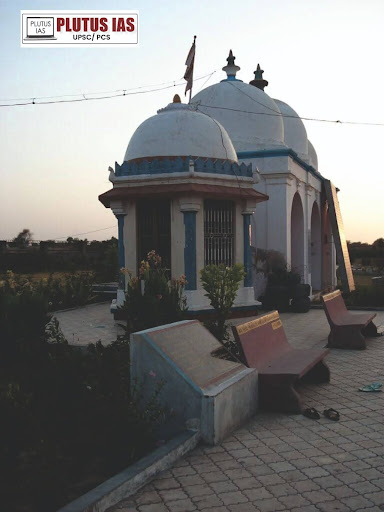18 Jan The Glorious History of Vadnagar
This article covers “Daily Current Affairs,” and the topic details related to “the Glorious History of Vadnagar”
Syllabus mapping:
GS-1: Art and Culture: Historical sites and the significance of these sites.
For Prelims:
Vadnagar’s historical name and its key architectural marvels.
For Mains:
What is the cultural significance of the Vadnagar and its impact on the cultural development of India?
Why in the News?
Prime Minister Narendra Modi highlighted that Vadnagar in Gujarat has a glorious history spanning over 2500 years. He emphasized the unique efforts undertaken to preserve and protect this historically significant site.

Vadnagar: Key Facts
Vadnagar is a town and municipality in the Mehsana district of Gujarat, India. Historically known as Anartapura (the capital of Anarta) and Anandapura, it holds immense historical significance. The Chinese traveler Xuanzang visited Vadnagar in 640 CE. Alexander Cunningham, the founder and first Director-General of the Archaeological Survey of India (ASI), identified Anandapura with Vadnagar. Notably, Vadnagar is also the birthplace of Narendra Modi, the current Prime Minister of India.
Vadnagar: Historical Overview
Pre-Mauryan Period (ca. 800–320 BCE): Contemporary to the Late Vedic and pre-Buddhist Mahajanapadas.
Mauryan Period (ca. 320–185 BCE).
Indo-Greek Period: Indo-Scythian/Shaka-Kshatrapas Period (ca. 35–415 CE): Linked to the descendants of Achaemenid provincial governors.
Hindu-Solanki Period.
Sultanate-Mughal to Gaekwad-British Colonial Rule (ca. 318 years ago).
Anartapura: The town is frequently mentioned in ancient inscriptions and texts under its former names, Anartapura and Anandapura. It appears in the Mahabharata as part of the Anarta Kingdom.
Chamatkarapura: It is also referenced in the Tirtha Mahatmya section of the Nagara Khanda of the Skanda Purana, called Chamatkarapura.
Junagadh rock inscription: The Junagadh rock inscription (150 CE) of King Rudradaman I mentions Anartha as a region in northern Gujarat.
Maitraka period (505–648 CE): During the Maitraka period (505–648 CE), Brahmins in Anartapura/Anandapura were granted land grants. The Harsola copper plates (949 CE) of the Paramara king also record land grants in this region, further linking Vadnagar with the Nagar Brahmins.
Cultural Significance of Vadnagar

Buddhist Monastery (2nd–7th Century CE): Excavations have uncovered a monastery with two votive stupas and a central courtyard surrounded by nine cells in a swastika-like layout, highlighting Vadnagar’s role in Buddhist history.
Jain Derasars: Two Jain temples in Vadnagar emphasize its multireligious past and its significance in Jain culture.
Hatkeshwar Mahadev Temple (15th Century): This prominent Shiva temple is dedicated to Hatkeshwar Mahadev, the family deity of the Nagar Brahmins. It features Indo-Saracenic architecture, a towering shikhara, and a richly decorated exterior with carvings of Hindu deities, mythological scenes, celestial beings, and floral motifs.
Sitala Mata Temple: Known for its intricate carvings of celestial figures and depictions of Krishna dancing with milkmaids (Rasmandala), this temple showcases exceptional craftsmanship.
Kirti Toran: A pair of 12th-century ornamental arches built from red and yellow sandstone, standing 40 feet tall, are iconic symbols of Gujarat’s architectural heritage. Likely constructed to commemorate a victory, the toranas feature carvings of battles, hunting scenes, deities, floral motifs, and divine figures. Their design reflects the grandeur of Solanki-era architecture, with similarities to the Rudra Mahalaya Temple in Siddhpur.
Narsinh Mehta’s Chori: A 12th-century torana associated with the renowned 15th-century Gujarati poet-saint Narsinh Mehta, celebrating his literary and spiritual contributions.
Tana-Riri Garden and Shrine: Dedicated to two sisters known for their exceptional singing skills.
Pancham Mehta’s Vav (Stepwell): A historical stepwell showcasing traditional water management and architectural design.
Janjanio Well and Gauri Kund: Ancient water structures that underline Vadnagar’s historical importance in sustaining urban life.
Baithakji of Gusaiji: A sacred place associated with the Pushti Marg sect.
Ancient Library and Directional Stone: Vestiges from the Solanki period, highlighting Vadnagar’s scholarly and cultural prominence.
Recognition and Legacy: Vadnagar’s historical and architectural significance has earned it a place on UNESCO’s tentative list of World Heritage Sites (2022). Its rich cultural tapestry, featuring influences from Buddhism, Jainism, and Hinduism, and its architectural marvels make it a vital chapter in India’s heritage narrative.
Conclusion:
Vadnagar holds remarkable significance in shaping Indian art, culture, and history. Its rich heritage, reflected in its architecture, religious diversity, and continuous habitation, is a source of pride and inspiration. Preserving such treasures is essential to safeguarding India’s cultural identity for future generations.
How many of the above pairs are correctly matched?
(a). Only one
(b). Only two
(c). All three
(d). None
ANSWER: A
Mains Question:
Q. Examine the cultural significance of the Solanki and Parampara dynasties in shaping India’s architectural and artistic heritage.
(Answer in 150 words)




No Comments